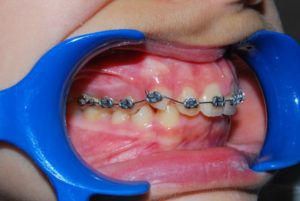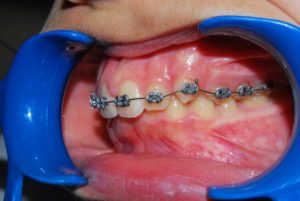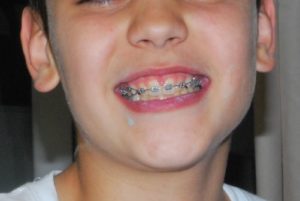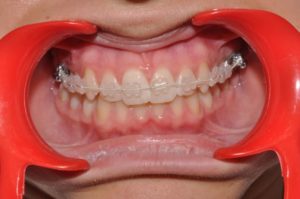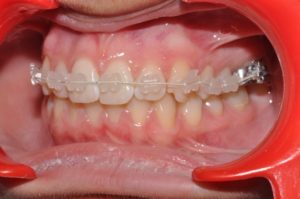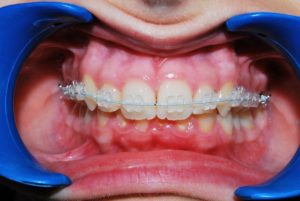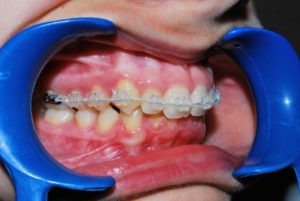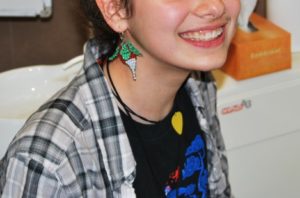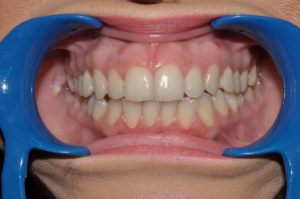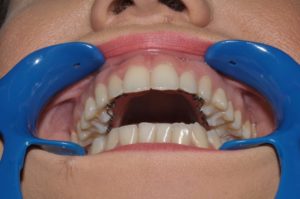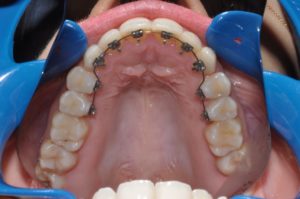Metal braces
.
Clear (ceramic) braces
Clear braces are made of materials (e.g. ceramic, crystalline, synthetic, etc.) that render their appearance less conspicuous and indiscernible. They consist of small individual brackets for each tooth that are attached together with standard metal or white metal wire. This tooth-coloured wire however, is usually Teflon coated and this coating disintegrates too fast, exposing thus, the underlying metal wire. This, unfortunately, cancels it’s esthetic benefit.
Ceramic
These brackets are made of, well…ceramic material! They are quite discreet and esthetic but they are tooth-coloured, not transparent. They behave more or less like the conventional metallic ones, delivering similar orthodontic treatment results.
Crystalline
In my office I choose to use the synthetic sapphire transparent, crystal-clear brackets (branded “Radiance”) manufactured by the U.S. –based company American Orthodontics. They are made of synthetic sapphire crystal (probably much like the face of Rolex watches). According to my opinion, when it comes to esthetic brackets, no other orthodontic company has managed to produce better clear brackets.
Lingual Braces
Lingual braces are called so because they are bonded to the back of the teeth, i.e. on the side of the tongue. This orthodontic technique is invisible, since no metal element is visible on the exterior surface of the teeth. There are specific indications and counter-indications for their use, depending on the type and severity of the orthodontic issue. Here is my personal opinion on lingual braces: There may be a few remaining indications to use them nowadays, although the huge advances in Invisalign treatment renders them almost obsolete. They are not inexpensive either.



